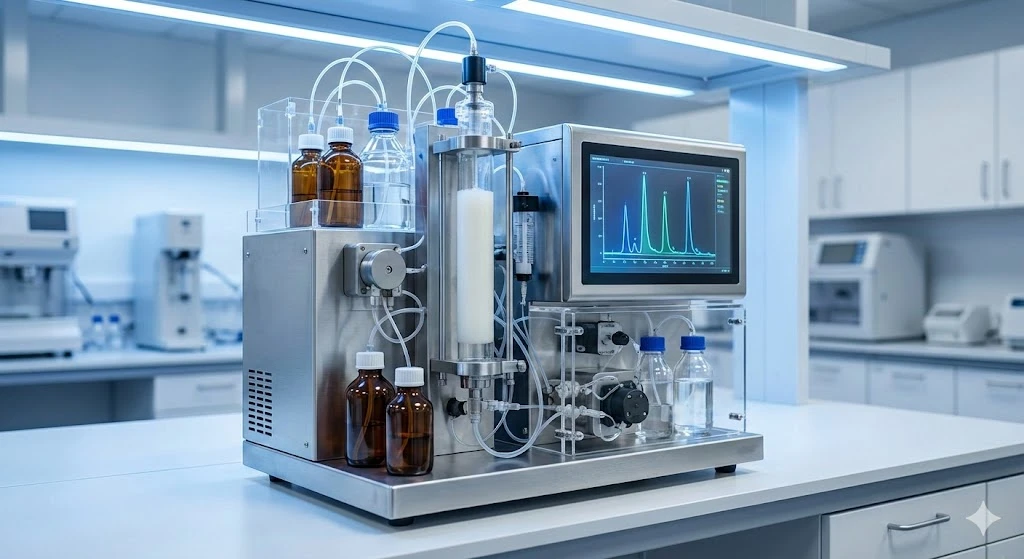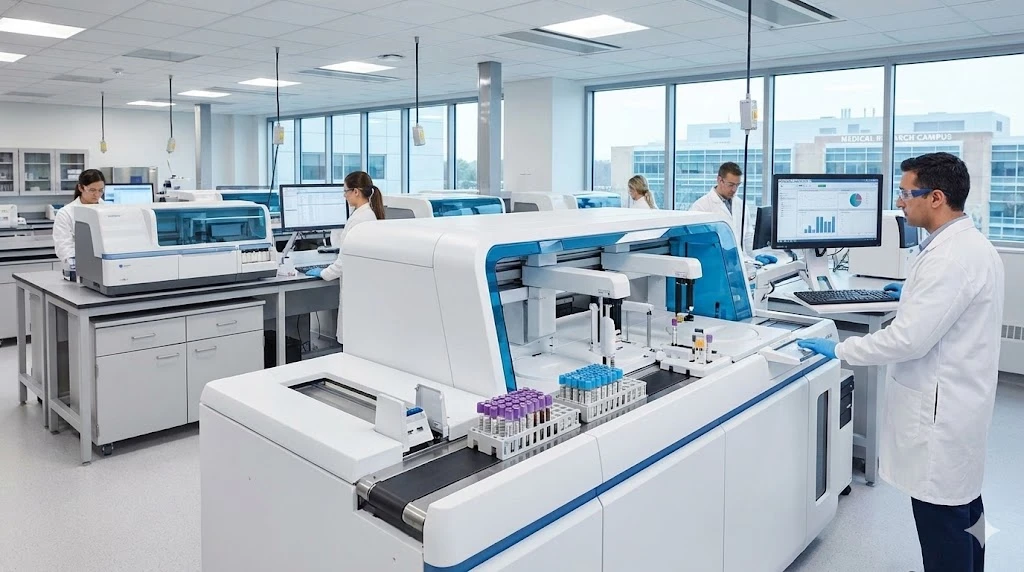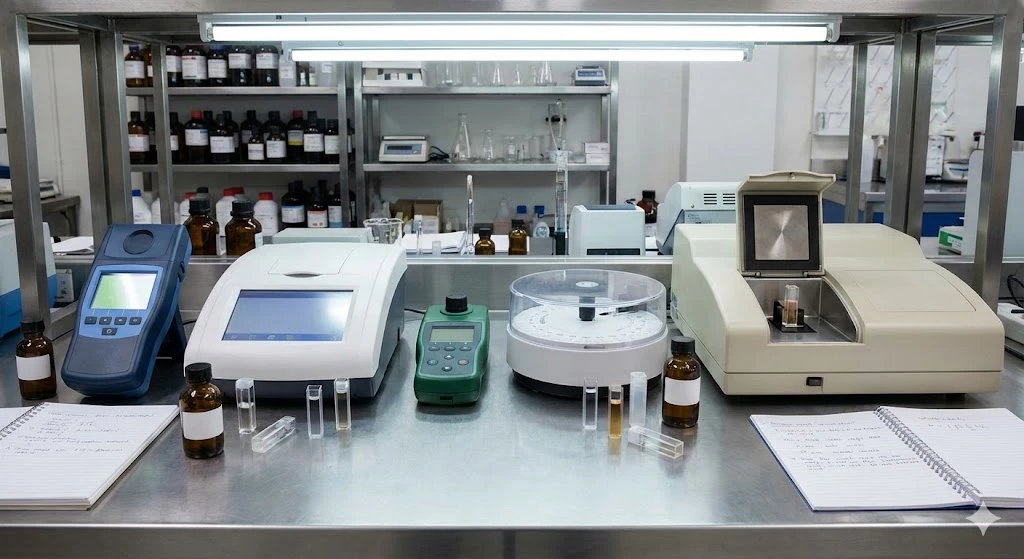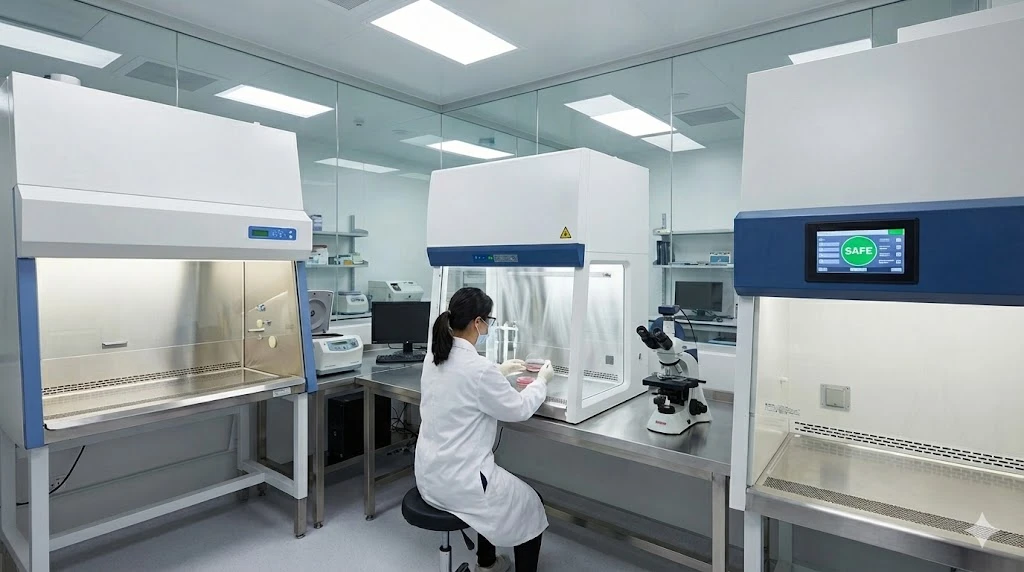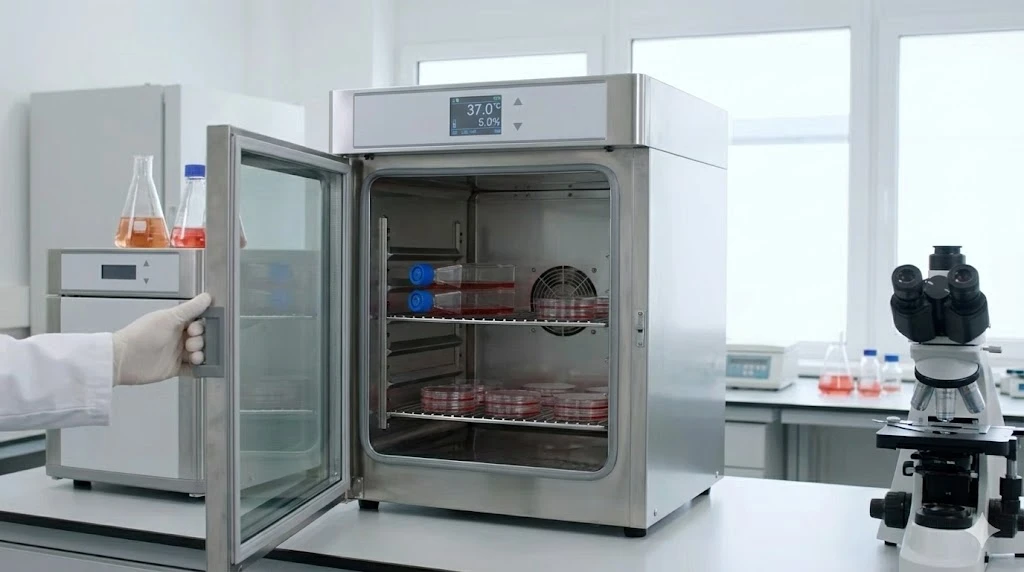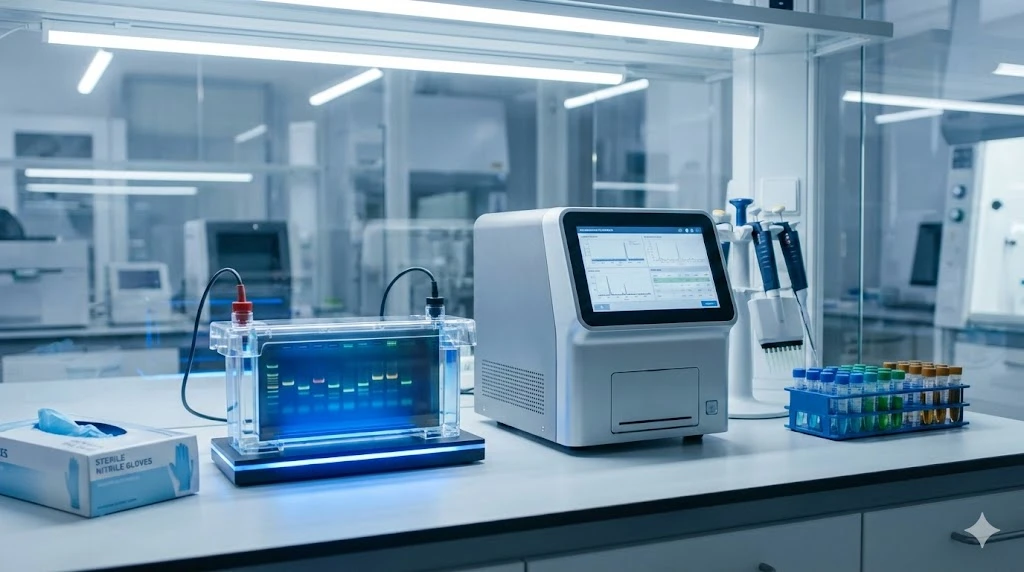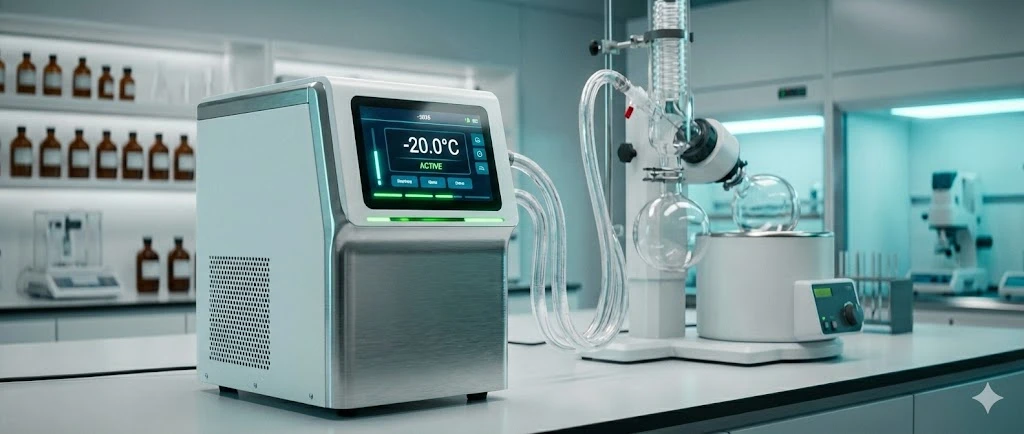Fourier Transform Infrared (FTIR) vs. Raman Spectroscopy: A Comprehensive Guide
ImageFX (2025) In the dynamic world of material science, chemical analysis, and quality control, two spectroscopic titans stand out: Fourier Transform Infrared (FTIR) and Raman spectroscopy. Both offer unparalleled insights into the molecular composition and structure of substances, playing pivotal roles across industries from manufacturing to environmental science. While often complementary, these techniques operate on distinct physical principles, each with unique strengths and ideal applications. Understanding their differences is key to unlocking their full potential in your research or industrial processes. This guide delves into the core mechanisms, advantages, and diverse applications of FTIR and Raman spectroscopy, helping you determine the best approach for your analytical needs. Fourier Transform Infrared (FTIR) spectroscopy is a widely adopted analytical technique rooted in the principles of infrared (IR) absorption. At its heart, FTIR measures how a sample absorbs and emits long-wavelength light, specifically in the infrared region of the electromagnetic spectrum. This interaction reveals the unique "fingerprint" of chemical compounds, as different functional groups within molecules absorb IR light at characteristic frequencies. This makes FTIR invaluable for: Identifying specific functional groups: Pinpointing the presence of hydroxyl (-OH), carbonyl (C=O), or amine (-NH2) groups, among others. Assessing sample purity: Detecting contaminants or impurities by their distinct absorption spectra. Quantifying components: Measuring the concentration of specific substances within a mixture. Unlike older, continuous wave spectrometers that use a monochromator and slit to select wavelengths, FTIR employs an interferometer. This innovative component revolutionizes the analytical process by: Directing all light to the sample: Instead of filtering light, the interferometer modulates the entire broadband IR beam. Generating an interferogram: It splits the light beam, varying the pathlength of one beam relative to a stationary reference beam. The resulting constructive and destructive interferences create a unique signal called an interferogram. Utilizing Fourier Transform: A powerful onboard computer then applies a Fourier Transform algorithm to convert this time-domain interferogram into a frequency-domain spectrum, revealing intensity versus frequency for all wavelengths simultaneously. This advanced design provides significant advantages over traditional IR methods: Enhanced Signal-to-Noise Ratio (SNR): By allowing all source energy to reach the sample, FTIR dramatically improves the clarity and quality of the spectral data. Superior Spectral Resolution: The resolution is primarily limited by the interferometer's design, consistently outperforming classic spectrophotometers. Rapid Data Acquisition: Multiple scans can be collected quickly and averaged, further boosting SNR and data reliability. Advanced Data Analysis: Modern software offers sophisticated tools for data conditioning, baseline correction, and spectral interpretation, enhancing analytical power. A notable sampling technique often paired with FTIR is Attenuated Total Reflectance (ATR). ATR simplifies sample preparation, making it ideal for a wide range of solids and liquids. It works by measuring changes in an internally reflected IR beam as it interacts with the sample's surface. This technique is particularly preferred for: Strongly absorbing or thick samples that might produce saturated peaks with traditional transmission IR. Homogeneous solid samples, surface coatings, or multi-layered materials. Analyzing samples in their native state, without the need for grinding, pressing pellets, or dissolving. Raman spectroscopy offers a complementary perspective on molecular structure, based on a different light-matter interaction: inelastic (Raman) scattering. When monochromatic light, typically from a laser, illuminates a sample, most of the light is scattered elastically (Rayleigh scattering) at the same wavelength as the incident light. However, a small fraction of photons undergo inelastic scattering, meaning they gain or lose energy as they interact with the sample's molecular vibrations. This energy shift, known as the Raman shift, provides a unique vibrational fingerprint of the molecule. The Raman shift offers crucial structural information about the vibrational modes within a chemical system, enabling: Precise chemical identification: Distinguishing between closely related compounds based on their unique vibrational patterns. Molecular characterization: Understanding bond types, molecular symmetry, and conformational changes. Spatial distribution analysis: When coupled with microscopy, mapping the distribution of chemical species within a sample. Key advantages that make Raman spectroscopy a powerful tool include: Minimal Water Interference: Unlike FTIR, Raman is not significantly affected by the strong IR absorption of water (a permanent dipole). This makes it exceptionally well-suited for analyzing aqueous solutions and biological samples like proteins, DNA, and RNA. Non-Invasive and Non-Destructive: The technique typically requires minimal to no sample preparation and does not alter or damage the sample, making it ideal for sensitive materials or in situ analysis. High Spatial Resolution: When combined with microscopy (confocal Raman microscopy), it can achieve high spatial resolution, enabling detailed chemical imaging and 3D depth profiling of optically transparent materials. Both FTIR and Raman spectroscopy are versatile techniques with broad applications across numerous fields. They can be integrated into single-purpose tools for specific tasks or serve as highly flexible analytical research instruments. Application Area FTIR Spectroscopy Strengths Raman Spectroscopy Strengths Polymer Analysis Rapid identification and characterization of plastics, quality control, blend analysis. Identification of specific polymer structures (e.g., carbon nanotubes, polypropylene fibers). Environmental Science Detection and characterization of microplastics in water and environmental samples. Microplastics analysis, especially in aqueous matrices due to minimal water interference. Pharmaceuticals Polymorph identification, drug formulation analysis, quality control of raw materials. Active pharmaceutical ingredient (API) mapping, crystallinity studies, container analysis. Materials Science Surface analysis (with ATR), thin film characterization, defect analysis. Stress/strain analysis, carbon material characterization (e.g., graphene), semiconductor analysis. Biological & Medical Analysis of biological fluids (e.g., blood, urine), protein secondary structure. Non-invasive tissue imaging (e.g., cancer detection via liquid biopsies), macromolecular analysis in aqueous solutions. Forensics & Art History Identification of unknown substances, analysis of paints, pigments, and fibers. Pigment identification, analysis of historical documents, drug detection. Furthermore, both techniques can be coupled with other analytical methods to provide even more comprehensive data: FTIR Coupling: Often integrated with microscopy for localized analysis, thermal analysis (TGA-FTIR) for evolved gas analysis, gas chromatography (GC-FTIR), and mass spectrometry (MS-FTIR) for complex mixture characterization. Raman Coupling: Primarily coupled with microscopy for high-resolution chemical mapping and 3D profiling. The advent of handheld FTIR devices and handheld Raman spectrometers has further expanded their utility, enabling rapid, on-site chemical detection for applications ranging from hazardous material identification and explosives detection to quality control in manufacturing and even potential point-of-care diagnostics in medicine. While both FTIR and Raman spectroscopy provide invaluable molecular insights, their distinct principles mean they excel in different scenarios and often offer complementary information. Consider FTIR when: You need to identify functional groups and determine the overall chemical composition of a sample. You are working with samples that have strong IR absorption, such as organic compounds. You require high sensitivity for detecting impurities or low-level components. You can utilize ATR for quick, minimal-prep analysis of solids and liquids. Consider Raman when: You are analyzing aqueous solutions or biological samples where water interference would be problematic for FTIR. You need to analyze samples non-invasively or in situ. You require high spatial resolution for chemical mapping or depth profiling (especially with microscopy). You are interested in specific vibrational modes related to molecular symmetry or carbon-based structures. In many advanced analytical scenarios, the most powerful approach involves utilizing both FTIR and Raman spectroscopy. The distinct yet complementary information they provide—FTIR for overall chemical purity and functional group identification, and Raman for structural distribution and specific bond characterization—can offer a holistic understanding of your sample that neither technique could achieve alone. In summary, both FTIR and Raman spectroscopy are indispensable tools in modern analytical chemistry, providing high-resolution chemical information across biological, materials, and remote applications. Their unique strengths make them suitable for a wide array of challenges, from quality control in industrial settings to cutting-edge research in environmental science and medicine. Explore a comprehensive range of FTIR Spectroscopy and Raman Spectroscopy listings, along with an expanding catalog of valuable resources, to further enhance your analytical capabilities. Discover the perfect spectroscopic solution for your needs at LabX.com today! What is the primary difference between FTIR and Raman spectroscopy?
FTIR spectroscopy measures the absorption of infrared light by molecular vibrations, providing information about functional groups. Raman spectroscopy, conversely, measures the inelastic scattering of laser light, revealing vibrational modes related to molecular structure and symmetry. Which technique is better for analyzing aqueous samples?
Raman spectroscopy is generally preferred for analyzing aqueous samples because water has a very weak Raman signal, whereas it strongly absorbs infrared light, which can interfere with FTIR measurements. Can FTIR and Raman spectroscopy be used together?
Yes, FTIR and Raman spectroscopy are often used complementarily. They provide distinct yet valuable information about a sample's molecular composition and structure, offering a more comprehensive understanding when used in combination. What are some common applications for these spectroscopic methods?
Both FTIR and Raman are widely used in polymer analysis, microplastics detection, pharmaceutical quality control, materials science, and biological/medical research. FTIR excels in identifying functional groups and purity, while Raman is strong in structural characterization and analysis in aqueous environments.
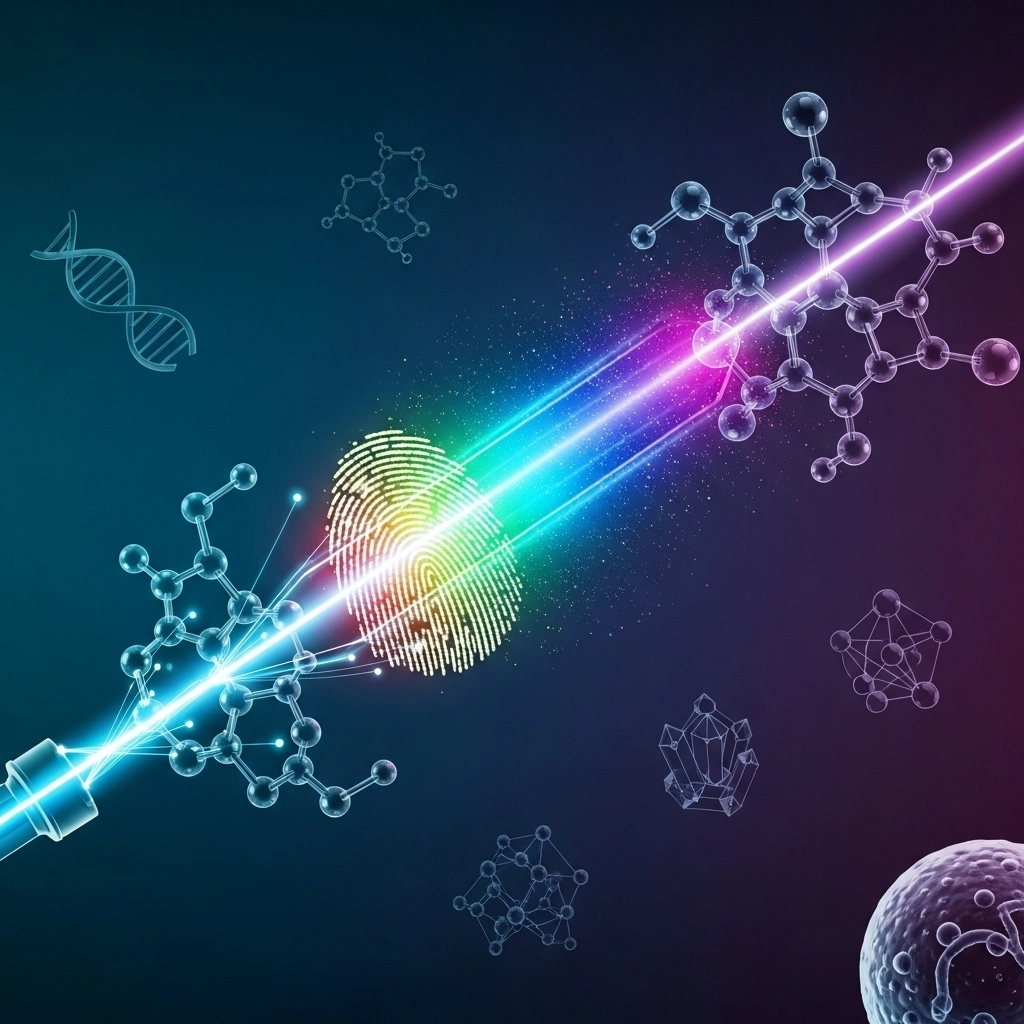
FTIR Spectroscopy: Unveiling Molecular Fingerprints
Raman Spectroscopy: Illuminating Vibrational Signatures
Beyond the Basics: Advanced Applications of FTIR and Raman
Choosing Your Technique: FTIR, Raman, or Both?
Final Thoughts on FTIR and Raman Spectroscopy
Frequently Asked Questions

